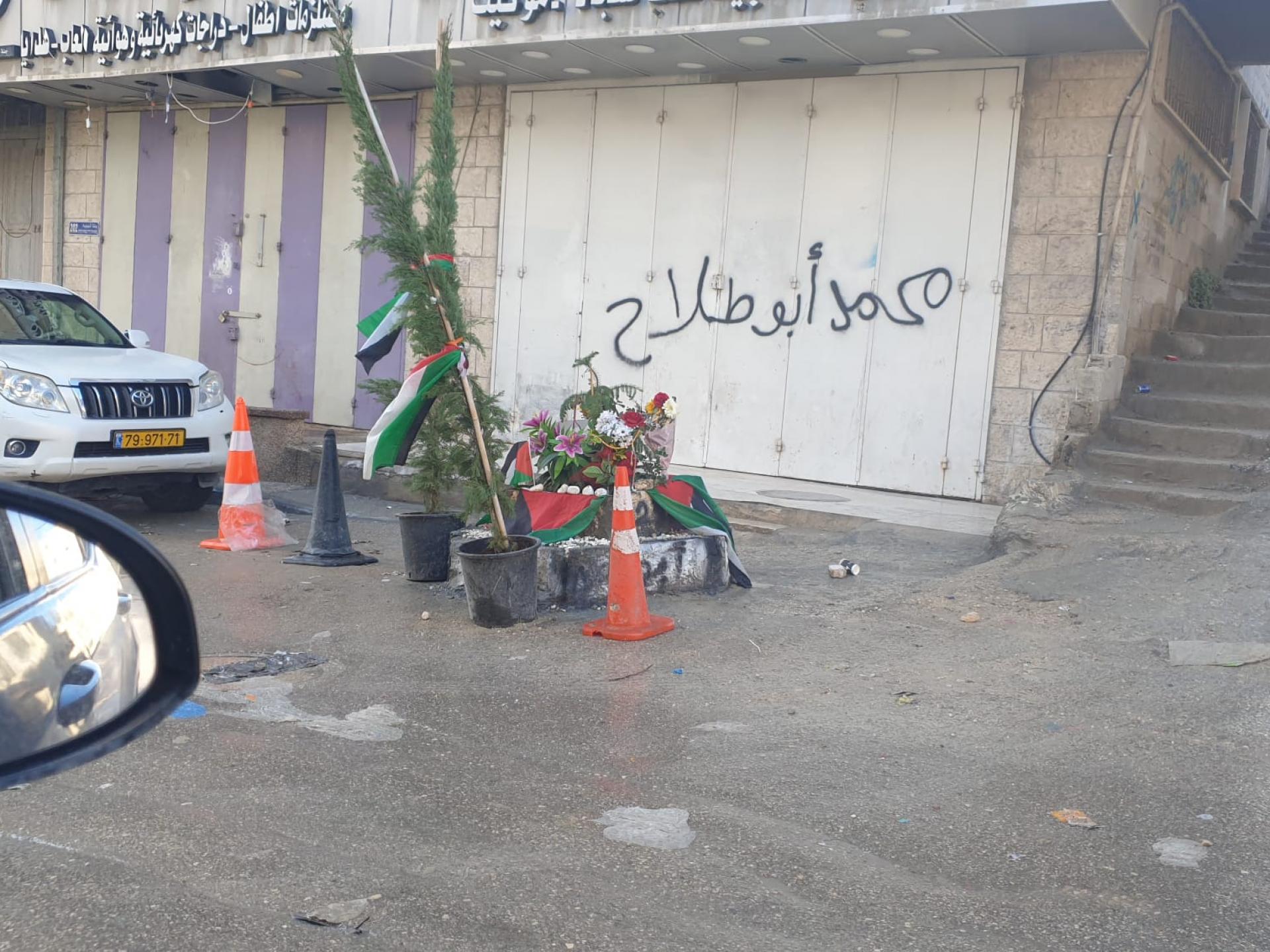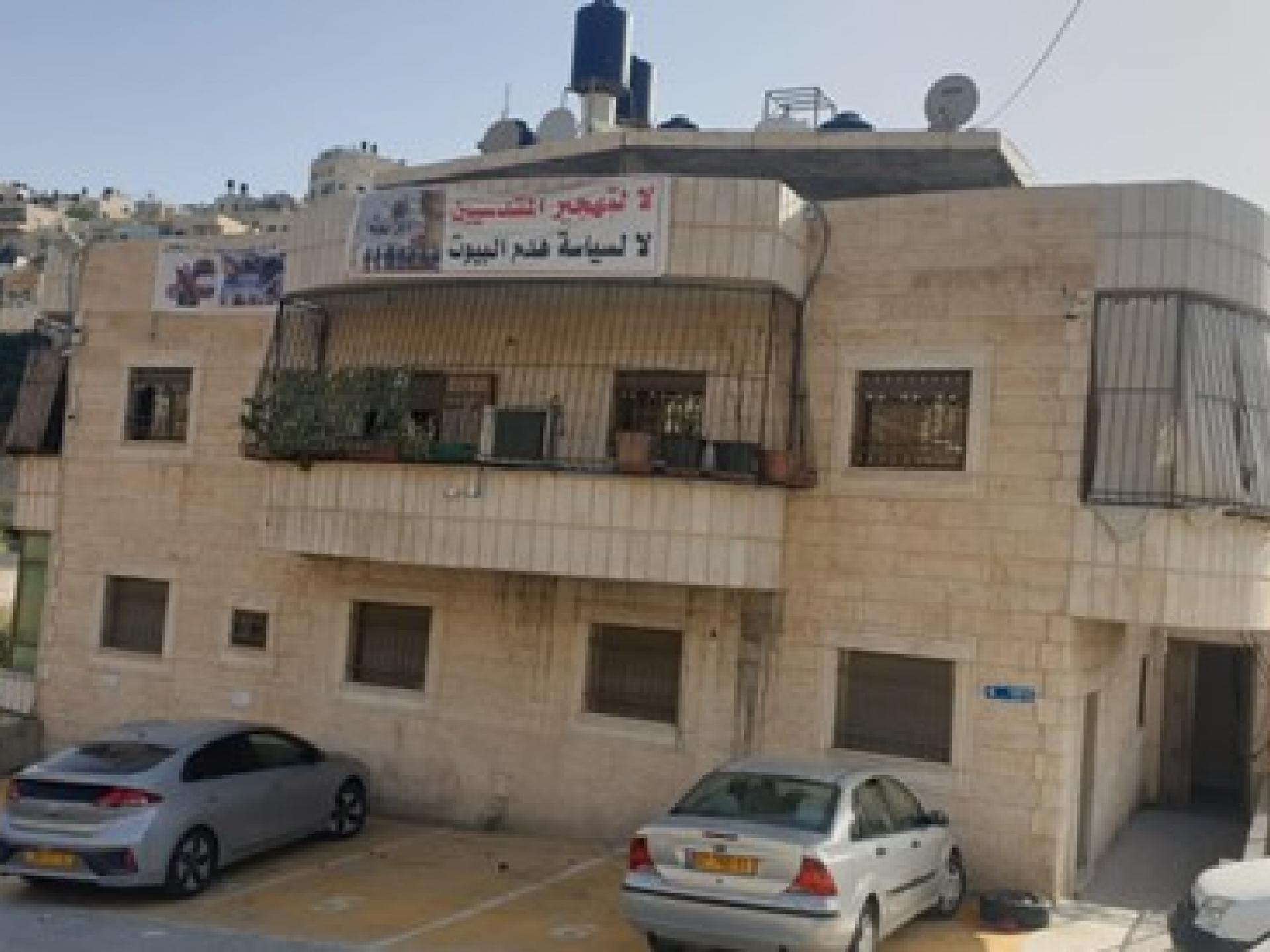Atarot - acceleration of the process to build the Jewish neighbourhood
Jabel Mukaber, Nof Zion settlement, Silwan, At-Ttr, Shuafat and Anata refugee camps, Qalandiya
Following news we received about roadblocks that were placed throughout East Jerusalem last week, we went to check the situation in several neighbourhoods which we know. We found no manned internal barriers, but there is preparation for the immediate placement of barriers and also manned observation posts. There were also many house demolitions that are not related to the families of the victims – the authorities were waiting for an opportunity. It was also a day for the news about the acceleration of the process to build the Jewish Atarot neighbourhood.
The Palestinian residents of Jerusalem that we met did not talk about the worsening of their situation expected from the new government. Evidently they feel that whatever comes will come. The situation is already bad today, and they feel they have no way to change anything.
Jabel Mukaber - the drop-off junction for the schools (Al Madares) at the Talpiot East border
Concrete blocks and cement blocks are placed on the side of the road. Above you can see a manned soldier's position on the stairs going down from Talpiot East neighbourhood to the junction. Those who are in the know at Sheikh Saed said, that checkpoint are put up in the mornings of when the children go to school and again during the hours when the Palestinians come from work in Jerusalem. And sometimes just unexpectedly. Today is Sunday so there is no school.
We travelled to the settlement of Nof Zion in Jabel Mukabar which is growing rapidly and bites into the surrounding rocks. A bus stands nearby to transport the settlers back and forth to Hebron road. This is unusual - explains the Arab driver. Usually only a round trip minibus is allocated. The view is really amazing. We continue to the road which goes down to the American road. It is being expanded, which is good. But why are we so suspicious and think that the road is intended mainly for the residents of Nof Zion to enable them to get to the roads which will lead them to the south and north of the West Bank?
There have been several demolitions this week in Jabel Mukabar and the nearby neighbourhood of Sawahra, which have been followed by the Palestinians protesting. According to information we received we tried to find one of the houses on the road that passes by the Kidron Valley, but were unsuccessful. The demolitions were not because of terrorism, but because of the lack of permits and also because many times there is also something else being planned for this location - a road, a settlement, in the end everything becomes clear.
Silwan
Another “candidate” which was notified today of an immediate demolition order is a house for 100 tenants in Wadi Qaddum. We already wrote about this last June:
"This is a beautiful house made of Jerusalem stone with elliptical balconies. It was built in 2014, 100 tenants live in it, but it does not have a license (it is almost impossible to get a building license in East Jerusalem).
The custodian of Palestinian properties and the municipality launched this year a comprehensive operation to check all the permits and registrations in the Land Registry Office of all the Palestinian houses in the east of the city in order to "make order" (that is, evacuate and destroy). It lies in a wadi below the Mount of Olives, from where it is planned to dig an apartheid tunnel that will bring the residents of the settlements of the South Bank to the roads of the North Bank. The municipality claims that the area is not for living but for sports, recreation and entertainment. Sounds as if they want to mock the Palestinians.”
It turns out that there was a verbal agreement with the municipality to settle the issue. But the deputy mayor, Arya King, a settler from the City of David, does not give up. And he has a lot of police backing now.
In Silwan we also saw works to restore the Shiloah pool in honour of its opening to the public. The works started at the end of December after years of delays. At the corner of the street, settlers are marching from all directions with children for transport to kindergartens outside the neighbourhood. They look more and more like the owners of the place. Transportation is at our expense of course.
There is no roadblock on the way up to the Dung Gate, but the road is unusually narrow, the Empire of the City of David consuming a large part of the road.
At-Tur and Shuafat-Anata
In Wadi Joz there is a new traffic light at the turn to the garages and the road is being widened. Kamal comments that precisely at the intersection at the end of the hill, near the Augusta Victoria Hospital - an intersection with four busy intersections to Wadi Joz, Mount Scopus, Makassed hospital and At-Tur - there has been a need for a roundabout or a traffic light for years, and nothing is done about it..
You enter through Road No. 1 to the Shuafat refugee camp checkpoint, which looks like a battlefield. As usual, the soldiers huddle in a group. Even now at 9:30 in the morning it's quite congested, even after students and workers have left earlier for work and school. There were many clashes in the camp following the demolition of the house of the terrorist who shot a female soldier at the checkpoint. A 16-year-old boy, Muhammad Ali Ibn Muhammad, was killed by police fire at a demonstration two weeks ago, and at the place of his death there is a memorial with flowers on the road.
This week the eastern entrance to Anata was blocked for several days. Now there is no checkpoint, but at the exit junction for the 437 leading to Hizma, Jerusalem and the Dead Sea there is a new post monitoring the traffic.
Qalandiya
The road to the Qalandiya checkpoint is congested at all hours of the day. In the traffic circle east of the checkpoint we saw a freshly tarred road, on the checkpoint of which it says "to the new path". Let's hope that the new short path for traffic coming from the checkpoint will ease the traffic jam in both directions. But nothing is sure here.
We went to see the entrance to the Qalandiya camp (Jerusalem area). There is no barrier today (there was for part of last week), but the garbage pile may still reach the road...
We retraced our steps and climbed our secret hill in A-ram overlooking the checkpoint and the road works. There are rumours that the work on the Israeli-only sunken crossing is about to be completed, but it doesn't look like that. It is difficult to understand how the sunken crossing will lead to Road 443 and the Begin Road to Jerusalem.
This week the eastern entrance to Anata was blocked for several days. Now there is no checkpoint, but at the exit junction for the 437 leading to Hizma, Jerusalem and the Dead Sea there is a new post monitoring the traffic.
Today it was also announced that the plans for the construction of the Jewish (Orthodox) neighbourhood of Atarot on the area of the old airport are advancing rapidly. This will be very close to the separation wall of Kafr Aqab (a Palestinian neighbourhood of Jerusalem that was pushed beyond the wall). Another wedge of 9,000 residents between Ramallah and Jerusalem, in front of the towers without building permits in the neglected Kafr Aqab. A pre-written script for big trouble.


